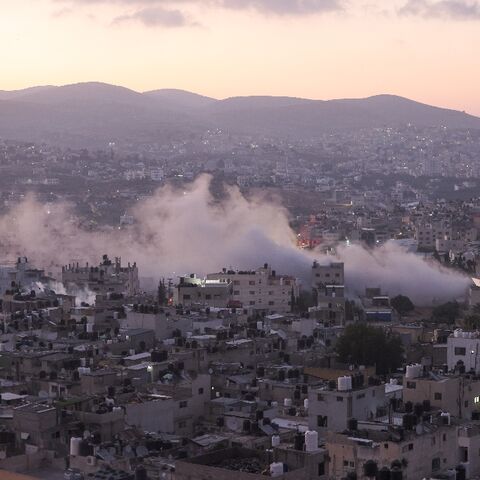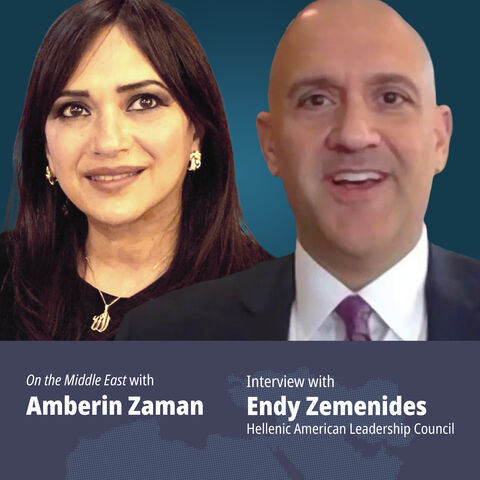TEL AVIV — National Security Minister Itamar Ben-Gvir visited the Temple Mount compound Tuesday in an act that was perceived by Palestinians, Jordan, the Emirates, Egypt and other Arab and Western countries as intentionally provocative.
Ben-Gvir had visited the sites many times in the past, including as a member of the Knesset opposition last March. His highly publicized plans to visit the site, holy to both Muslims and Jews, had prompted warnings of retaliation by Hamas for his “desecration” of the Al-Aqsa Mosque area. Nonetheless, he went ahead with his plans and live-blogged the event.
Tuesday's visit was very different.
Ben-Gvir had stayed away from the volatile site since the Nov. 1 elections, when his nationalist Jewish Power party helped restore Benjamin Netanyahu to the premiership. One of the main items on the party's agenda is to increase visits of Jews to the holy site and allow Jews to pray there, so Ben-Gvir’s political base was unhappy that he had not yet visited the site. They accused him of chickening out now that he has been appointed minister of national security.
Hamas repeated its threats over violations of the longstanding status quo by the new government and Israel’s allies in the region conveyed similar warnings that a highly touted visit by a national security minister whose name has become synonymous with racism would be throwing a match into a keg of dynamite.
Under pressure from his supporters, Ben-Gvir announced that he would visit the Temple Mount this week. On Monday, Netanyahu reportedly urged Ben-Gvir to delay his visit so as not to derail his own long-anticipated visit to the Emirates, which he missed when he was ousted from power in 2021. Netanyahu was forced to watch his reviled successors Naftali Bennett and Yair Lapid reap the fruits of the historic agreements he engineered with Arab states.
But barely 12 hours later, on Tuesday, Israelis awoke to photos of Ben-Gvir and his security detail walking into the Temple Mount compound. Throughout the previous day Ben-Gvir had been evasive with the media, arriving at his meeting with Netanyahu on foot rather than in a motorcade so as not to draw attention and then meeting with Shin Bet director Ronen Bar in Tel Aviv for security briefings. His early-morning visit to the site lasted 13 minutes. He came in through a side entrance, walked around quickly without photographers and was out almost before anyone noticed.
His visit nonetheless played well with his adherents and suggested Hamas' threats were hollow rhetoric. On the other hand, Ben-Gvir made his low-key foray into the compound more like a thief in the night than a “landlord,” as he likes to describe himself.
The Temple Mount has been a hotspot since Israel captured it in the 1967 war, periodically ramping up diplomatic tensions and setting off deadly clashes. Does the new government, Israel’s most extreme and nationalist ever, presage an escalation or perhaps the normalization of Jewish worship at the site and an easing of tensions?
For now, the first option seems the likeliest, if not in the immediate term. Knesset member Mansour Abbas, leader of the Islamist Ra’am party considered a standard bearer of Arab moderation, issued a mild response. “I am not the only one who says Jews are banned from ascending the Temple Mount. Rabbis say it too in accordance with halachic Jewish law,” Abbas told the FM103 radio station. “Al-Aqsa is a Muslim mosque, although I am aware that there are other claims. … This is not a matter of individual or religious rights.”
Abbas warned against destroying the carefully calibrated trust between Jews and Muslims over the site. “We have already experienced this in the past," he said. "The prime minister seems to have been part of this maneuver. The whole Al-Aqsa issue is built on trust, especially between Israel and Jordan. Who will now take seriously Netanyahu’s declarations of intent to preserve the status quo?”
The coming days will reveal which way the wind is blowing on the Temple Mount policy under the sixth Netanyahu government. While Ben-Gvir did make good on his pledge to visit the site, he followed the advice of the Shin Bet and Ronen Bar in scheduling the visit for the very early morning hours, conducting it in full coordination with security officials and without a media circus to avoid upsetting the status quo. Jordan issued a strong condemnation of Ben-Gvir’s visit and called on the international community to intervene, but the players in this dangerous game each kept their reactions low key.
Such restraint may not be possible in the future if Ben-Gvir turns his ascents into a habit. A visit by Knesset opposition leader Ariel Sharon to the Temple Mount in October 2000 ignited bloody riots in Jerusalem that spread to the West Bank and deteriorated into a five-year Palestinian uprising known as the second intifada, in which more than 1,000 Israelis and over 3,000 Palestinians were killed.
"If this evil genie is freed from the bottle again, it will be very difficult to shove it back in," a senior Israeli military official told Al-Monitor on condition of anonymity. Former military Chief Gadi Eizenkot also told Al-Monitor, "It took us seven years last time to put the genie back in the bottle. Investing another seven years in this matter is not worth it. You have to learn from experience."
Netanyahu dealt deftly with extremist ventures onto the Temple Mount by Ben-Gvir and others in the past. Just two years ago, he prided himself on having prevented Ben-Gvir from setting the Middle East on fire when he asked that Jews be allowed to pray on the Temple Mount. While once again Ben-Gvir did not pray on the Temple Mount, this time Netanyahu is Ben-Gvir's hostage, reliant on his party’s support to remain in power and derail his corruption trial. We should therefore all hope that Ben-Gvir does not decide to pray at the Temple Mount, because Netanyahu clearly can no longer rein him in.








